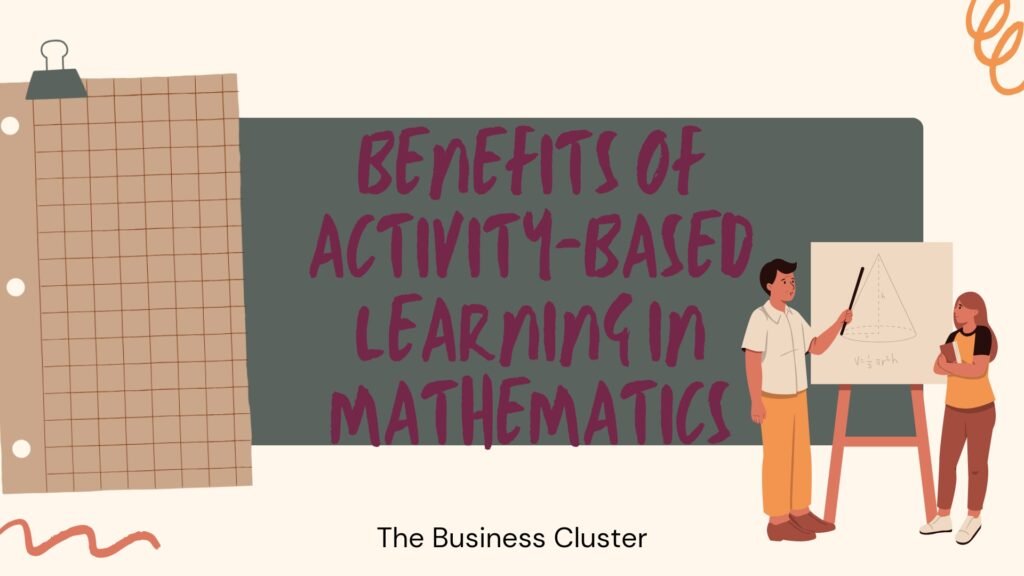Benefits of Activity-based Learning in Mathematics
Mathematics often makes students feel scared and worried. But it doesn’t have to be like that. By using activity-based learning (ABL) in math classes, teachers can change how students learn. ABL involves hands-on activities that help students understand and enjoy math more. This approach can make a big difference in how students feel about math and how well they learn it.
This blog will look at the benefits of ABL in math education. It will give ideas for teachers who want to make their teaching better. The blog will explain how ABL can engage students and help them learn math more extremely.
Understanding Activity-Based Learning
Activity-based learning is a way of teaching where students actively take part in their learning. Instead of just listening to the teacher talk, students do hands-on activities that help them explore and discover math concepts. This method helps students connect what they learn in math class to real-life situations, making it more fun and interesting for them.

Studies show that activity-based learning can really improve how well students understand math. When students do practical activities, they are more likely to remember what they learn and use it in different situations. By moving away from the usual lecture-based teaching, teachers can create a more exciting and interactive classroom environment for their students.
Benefits of Activity-Based Learning in Mathematics
1. Enhances Engagement and Motivation
One of the main benefits of activity-based learning is that it gets students excited about learning. When students do activities, they are more interested in the subject. This increased interest leads to higher motivation levels, as students have fun learning through play and exploration.
For example, using games and puzzles in math lessons can turn boring topics into fun challenges. As students work together to solve problems, they feel closer to their classmates and support each other. This teamwork further motivates them to keep learning.
2. Promotes Critical Thinking and Problem-Solving Skills
Activity-based learning helps students think critically and build problem-solving skills. When they face real-life challenges, students learn to look at situations, make choices, and think about the results. This way of thinking is important for doing well in math and other subjects.
Through activities like group projects or hands-on experiments, students can dive deeper into math concepts. This approach lets them find solutions on their own, which helps them feel more confident and independent.
3. Supports Diverse Learning Styles
Each student learns differently. Activity-based learning takes these differences into account by offering various activities that work for visual, auditory, and hands-on learners. For example, using physical objects like blocks helps visual learners understand abstract math ideas, while group discussions are great for auditory learners who learn by listening.
By using a variety of activities, teachers can make sure that all students can engage with the material in a way that works best for them. This inclusive approach creates a positive learning environment where every student can succeed. Additionally, it allows students to explore their strengths and develop their preferred learning styles.
4. Builds Social Skills and Teamwork
Mathematics is often seen as a subject that students work on alone. However, activity-based learning (ABL) focuses on teamwork and collaboration. Students often work in groups to solve problems, which helps them improve their communication and social skills.
As they work together, students learn to respect each other’s ideas and develop empathy for their classmates. This social interaction not only helps them understand math better but also prepares them for working with others in school and their future jobs. Overall, ABL creates a supportive environment where students can grow both academically and socially.
5. Increases Retention and Recall
Studies show that students who learn through activity-based methods remember information for a longer time compared to those who learn the traditional way. This is because actively participating in learning helps reinforce the information through experience.
When students use math concepts in real-life activities, they create connections in their minds that make it easier to remember. This long-term retention is very important for building a strong foundation in math, as math concepts often build on each other. For example, if a student understands fractions well from hands-on activities, they will be better prepared to learn more advanced math concepts that involve fractions later on.
Activity-based learning helps students make these mental connections and remember information better. It’s a powerful way to help students gain a deep understanding of math that will serve them well as they continue their math education.
Furthermore, want to apply for a teaching job? Click here to read the guide to apply for a teacher.
Implementing Activity-Based Learning in the Classroom
1. Incorporate Real-Life Scenarios
To make mathematics relevant, teachers should integrate real-life scenarios into their lessons. For example, using budgeting exercises can help students understand addition, subtraction, and percentages.
2. Utilize Manipulatives and Visual Aids
Manipulatives such as blocks, counters, and visual aids like charts and graphs can enhance understanding. These tools allow students to visualize and physically manipulate mathematical concepts, making them more accessible.
3. Foster a Collaborative Environment
Encouraging group work is essential for ABL. Teachers can design activities that require students to work together, promoting teamwork and communication skills.
4. Encourage Exploration and Creativity
Allowing students to explore mathematical concepts creatively can lead to deeper understanding. For instance, teachers might encourage students to create their own math games or puzzles, fostering innovation.
Conclusion
Using activity-based learning in math education can greatly improve students’ engagement, motivation, and understanding. By creating a collaborative and interactive classroom, teachers can help students develop important skills like critical thinking and problem-solving.
As you think about the benefits of activity-based learning, consider how you can use these strategies in your own classroom. Remember, making math fun is not just about the activities; it’s also about creating a space where students feel free to explore and discover new ideas.
Visit our website, The Business Cluster to read more such blogs.
If you want to learn more about effective teaching strategies and resources, feel free to reach out to our business cluster for support. Together, we can make math an enjoyable and rewarding experience for all students!


Post Comment